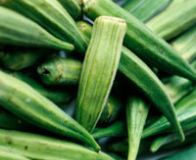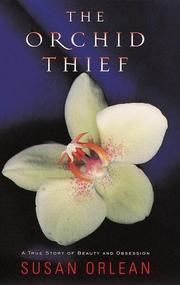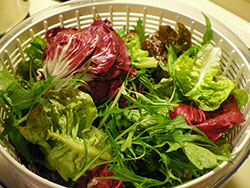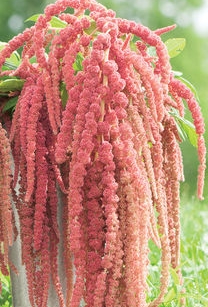The Horticulture Quiz: MCQ!
(205).jpg)
Horticulture is when you plant in gardens to create foods and medicinal ingredients. Horticulturists grow beautiful flowers, plentiful fruits, meaty nuts, delicious vegetables, and healthy herbs. As it pertains to this quiz, you will need to know which fruit contains the most vitamin C, photoperiodism, which plants exhibit the C4 cycle, and the National Institute of Agricultural Marketing. This quiz will teach you the ins and outs of horticulture. Give it a shot.
- 1.
Richest source of vit-C ?
- A.
Orang
- B.
Aonla
- C.
Guava
- D.
Barbados cherry
Correct Answer
D. Barbados cherryExplanation
Barbados (1000-4000 mg)>Aonla (600mg)>Guava (299mg/100g).Rate this question:
-
- 2.
On the basis of photoperiodism, Cucurbits are?
- A.
Short day
- B.
Long day
- C.
Day neutral
- D.
Monecious
Correct Answer
C. Day neutralExplanation
Cucurbits are classified as day neutral plants based on photoperiodism. This means that their flowering and fruiting processes are not affected by the length of daylight. Unlike short day or long day plants, cucurbits do not require specific day lengths to initiate flowering. They are able to flower and fruit regardless of the day length, making them day neutral.Rate this question:
-
- 3.
Perkins long green is a variety of?
- A.
Tomato
- B.
Okra
- C.
Brinjal
- D.
Chilli
Correct Answer
B. OkraExplanation
Perkins long green is a variety of okra. Okra is a flowering plant that is cultivated for its edible green seed pods. It is commonly used in various cuisines around the world and is known for its slimy texture when cooked. Perkins long green is a specific variety of okra that is known for its long, slender pods.Rate this question:
-
- 4.
Which of the following plant exhibit C4 cycle?
- A.
Amaranthus
- B.
Indian spinach
- C.
Lettuce
- D.
1& 2 both
Correct Answer
D. 1& 2 bothExplanation
Both Amaranthus and Indian spinach exhibit the C4 cycle. The C4 cycle is a photosynthetic process that allows plants to efficiently fix carbon dioxide and minimize water loss. These plants have specialized leaf anatomy and biochemistry that enable them to thrive in hot and dry environments. The C4 cycle helps them to adapt to these conditions by concentrating carbon dioxide in specific cells, which increases photosynthetic efficiency and reduces the rate of water loss through transpiration.Rate this question:
-
- 5.
Arka Anamika is a cross between A. esculentus ×A. Manihot app.
- A.
Manihot
- B.
Fruitescence
- C.
Tetragonaloba
- D.
Tetraphyllus
Correct Answer
D. TetraphyllusExplanation
The given answer, Tetraphyllus, is the correct choice because it is the only option provided that is not a species or variety of the Manihot plant. The question states that Arka Anamika is a cross between A. esculentus and A. Manihot app, so it can be inferred that Arka Anamika is a different species or variety altogether, which is represented by the option Tetraphyllus.Rate this question:
-
- 6.
National Institute of Agricultural Marketing( NIAM 1988) is situated at?
- A.
Bengaluru
- B.
Junagarh
- C.
Hyderabad
- D.
Jaipur
Correct Answer
D. JaipurExplanation
The correct answer is Jaipur. The National Institute of Agricultural Marketing (NIAM) was established in 1988 and is located in Jaipur.Rate this question:
-
- 7.
Which of the following is known as a 'heaven for Orchid?
- A.
Sikkim
- B.
Kalimpong
- C.
Gangtok
- D.
Bhubaneshwar
Correct Answer
B. KalimpongExplanation
Kalimpong is known as a 'heaven for Orchids' because it is famous for its extensive orchid nurseries and flower markets. The climate and altitude of Kalimpong provide the perfect conditions for growing a wide variety of orchids. The town is surrounded by lush green hills and is a popular destination for orchid enthusiasts and nature lovers. Many rare and exotic species of orchids can be found in Kalimpong, making it a paradise for orchid lovers.Rate this question:
-
- 8.
Heterosis breeding is commonly used in the following crops?
- A.
Tomato
- B.
Chilli
- C.
Brinjal
- D.
Cucumber
Correct Answer
C. BrinjalExplanation
Heterosis breeding, also known as hybrid breeding, is a technique used to create new plant varieties with improved characteristics by crossing genetically diverse parents. It is commonly used in crops like tomato, chilli, brinjal, and cucumber. Therefore, the correct answer is Brinjal.Rate this question:
-
- 9.
Masing and selfing breeding methods are used in?
- A.
Papaya
- B.
Turnip
- C.
Allium spp.
- D.
Mango
Correct Answer
C. Allium spp.Explanation
Masing and selfing breeding methods are used in Allium spp. Allium spp. refers to the genus of plants that includes onions, garlic, leeks, and other similar plants. Masing is a method of breeding where selected plants are cross-pollinated to produce seeds with desired traits. Selfing, on the other hand, involves self-pollination of a plant to produce seeds. These breeding methods are commonly used in Allium spp. to develop new varieties with improved characteristics such as disease resistance, yield, and flavor.Rate this question:
-
- 10.
Which of the following belong to summer leafy vegetables?
- A.
Amaranthus
- B.
Spinach
- C.
Sorrel
- D.
Karamsag
Correct Answer
A. AmaranthusExplanation
Amaranthus belongs to the category of summer leafy vegetables.Rate this question:
-
- 11.
Poor man's vegetable is?
- A.
Amaranthus
- B.
Lettuce
- C.
Chakwal
- D.
New Zealand Spinach
Correct Answer
A. AmaranthusExplanation
Amaranthus is considered the "poor man's vegetable" because it is a highly nutritious plant that is easily grown and affordable. It is commonly found in many countries and is often used as a staple food in impoverished communities. Amaranthus is rich in vitamins, minerals, and antioxidants, making it a valuable source of nutrition for those with limited resources.Rate this question:
-
- 12.
The seed rate of Amaranthus for direct sowing per hectare is?
- A.
1 kg
- B.
1.5 kg
- C.
2 kg
- D.
2.5 kg
Correct Answer
C. 2 kgExplanation
The correct answer is 2 kg. The seed rate of Amaranthus for direct sowing per hectare is 2 kg. This means that for every hectare of land, 2 kg of Amaranthus seeds should be used for direct sowing.Rate this question:
-
- 13.
Which Amaranthus variety is used for dye extraction?
- A.
Pusa lal chaulai
- B.
Pusa kiran
- C.
Pusa kirti
- D.
Sirukeerai
Correct Answer
A. Pusa lal chaulaiExplanation
Pusa lal chaulai is the correct answer because it is a variety of Amaranthus that is commonly used for dye extraction. This variety is known for its vibrant red color, which makes it ideal for dyeing purposes. The red pigment extracted from Pusa lal chaulai can be used to dye fabrics, yarns, and other materials. Additionally, this variety is also valued for its nutritional benefits and is often consumed as a leafy vegetable.Rate this question:
-
- 14.
Basella commonly known as?
- A.
Poi
- B.
Malabar night shade
- C.
Malabar spinach
- D.
All of these
Correct Answer
D. All of theseExplanation
Basella, commonly known as Malabar spinach, is a leafy green vegetable that is widely used in various cuisines. It is also known by the names Poi and Malabar night shade. Therefore, the correct answer is "All of these" as all the given options are different names for Basella.Rate this question:
-
- 15.
The botanical name of Heart shape Basella?
- A.
B. alba
- B.
B.cordifolia
- C.
B.rubra
- D.
B.tricolor
Correct Answer
B. B.cordifoliaExplanation
The correct answer is B.cordifolia because Basella cordifolia is commonly known as heart shape Basella. It is a perennial vine that is native to tropical regions and is known for its heart-shaped leaves. The botanical name of a plant is the scientific name given to it based on its characteristics, and in this case, B.cordifolia accurately represents the heart shape Basella.Rate this question:
-
- 16.
The Palak seed germinate after sowing_____________
- A.
8-10 days
- B.
4-5 days
- C.
2-3 days
- D.
12-15days
Correct Answer
A. 8-10 daysExplanation
The correct answer is 8-10 days. This is because the germination process of Palak seeds typically takes around 8-10 days after they are sown. During this time, the seeds absorb water and nutrients from the soil, causing them to swell and eventually sprout. The exact duration may vary depending on factors such as temperature, moisture, and soil conditions.Rate this question:
-
- 17.
Tetraploid species of amaranthus is?
- A.
A. Caudatus
- B.
A.cruentus
- C.
A.dubius
- D.
A.tricolor
Correct Answer
C. A.dubiusExplanation
The correct answer is A.dubius because tetraploid refers to a species that has four sets of chromosomes. Amaranthus dubius is a tetraploid species of amaranthus, meaning it has four sets of chromosomes. Amaranthus caudatus, Amaranthus cruentus, and Amaranthus tricolor are not specified as tetraploid species.Rate this question:
-
- 18.
The ancestor of palak is?
- A.
B.vulgaris var.maritima
- B.
B.vulgaris car. Cicla
- C.
B. Vulgaris var.sylvestris
- D.
None of these
Correct Answer
A. B.vulgaris var.maritimaExplanation
The correct answer is B.vulgaris var.maritima. This is because palak, also known as spinach, is a variety of Beta vulgaris, which is commonly known as beetroot. Among the given options, B.vulgaris var.maritima is the closest match as it belongs to the same species as palak. B.vulgaris car. Cicla and B. Vulgaris var.sylvestris are different varieties of beetroot and not the ancestor of palak. Therefore, the correct answer is B.vulgaris var.maritima.Rate this question:
-
- 19.
The ancestor of Spinach is?
- A.
Spinacia oleracea
- B.
Spinacia tetrandra
- C.
Spinacia oleracea var. sylvestris
- D.
None of these
Correct Answer
B. Spinacia tetrandraExplanation
Spinacia tetrandra is the correct answer because it is believed to be the ancestor of Spinacia oleracea, which is the common spinach that we consume today. Spinacia tetrandra is a wild relative of Spinacia oleracea and is found in parts of Asia. Through selective breeding and cultivation, Spinacia oleracea was developed from Spinacia tetrandra, resulting in the spinach that is widely grown and consumed around the world.Rate this question:
-
- 20.
Which of the following crop belong to the 'goosefoot' family?
- A.
Lettuce
- B.
Asparagus
- C.
Spinach
- D.
Sorrel
Correct Answer
C. SpinachExplanation
Spinach belongs to the 'goosefoot' family. This family is known as Chenopodiaceae, and spinach is a member of this family. It is a leafy green vegetable that is rich in nutrients and often used in salads, soups, and other dishes. Spinach has a distinctive taste and is known for its high iron content.Rate this question:
-
- 21.
Which of the following vegetable crops known as "sparrow grass"?
- A.
Globe artichoke
- B.
EFY
- C.
Asparagus
- D.
Rhuharb
Correct Answer
C. AsparagusExplanation
Asparagus is known as "sparrow grass" because of its slender, long shoots that resemble the shape and size of a sparrow's leg. This nickname is given to asparagus due to its delicate and tender texture, which is similar to the texture of young sparrow grass.Rate this question:
-
- 22.
Pusa early bunching is a variety of?
- A.
Fennel
- B.
Tomato
- C.
Brinjal
- D.
Fenugreek
Correct Answer
D. FenugreekExplanation
Pusa early bunching is a variety of fenugreek. Fenugreek is a herb that is commonly used in Indian cuisine for its aromatic leaves and seeds. Pusa early bunching refers to a specific variety of fenugreek that is known for its ability to produce a high yield of leaves in a short period of time. This variety is often preferred by farmers and gardeners who want to harvest fenugreek leaves early for culinary purposes.Rate this question:
-
- 23.
Khera Lucknow is a variety of?
- A.
Broccoli
- B.
Kale
- C.
Palak
- D.
Spinach
Correct Answer
D. SpinachExplanation
Khera Lucknow is a variety of spinach.Rate this question:
-
- 24.
Watercress is botanically known as?
- A.
Lipidium sativum
- B.
Anthriscum cerefolium
- C.
Nasturtium officinale
- D.
Artiplex hortensis
Correct Answer
C. Nasturtium officinaleExplanation
Nasturtium officinale is the correct answer because it is the botanical name for watercress. This plant is commonly known as watercress and is a member of the Brassicaceae family. It is a semi-aquatic perennial herb that is often used in salads and other culinary dishes due to its peppery taste and high nutrient content.Rate this question:
-
Quiz Review Timeline +
Our quizzes are rigorously reviewed, monitored and continuously updated by our expert board to maintain accuracy, relevance, and timeliness.
-
Current Version
-
Aug 15, 2024Quiz Edited by
ProProfs Editorial Team -
Jul 06, 2020Quiz Created by
Lalityadav56511
 Back to top
Back to top











